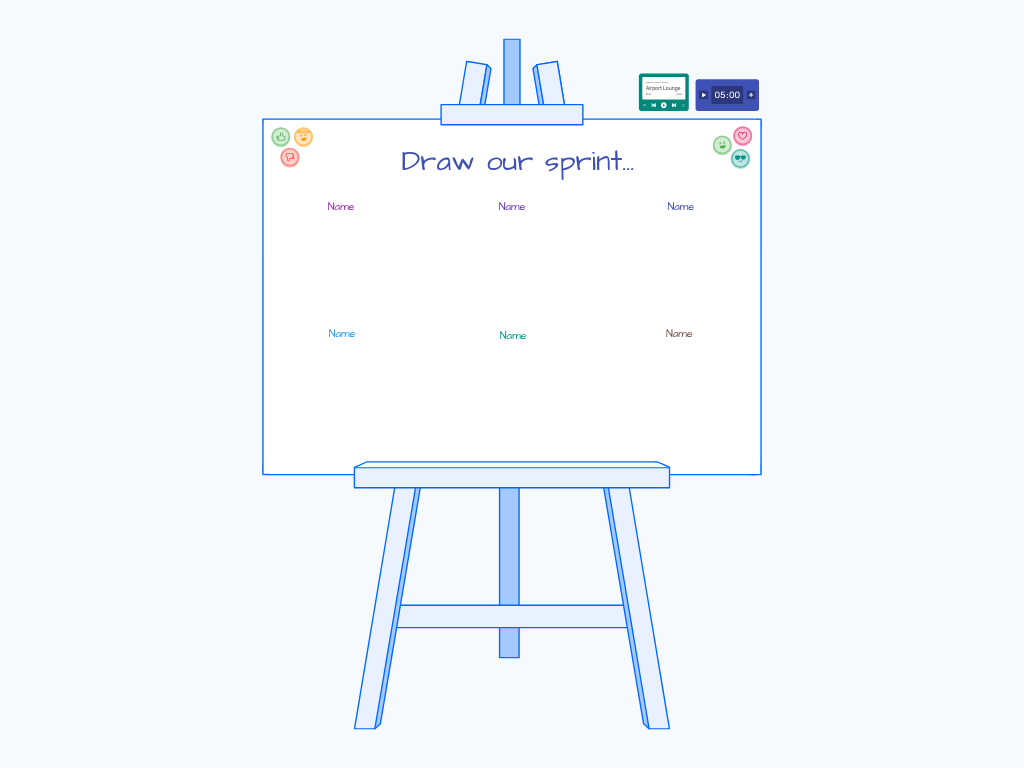Elephant in the Room Retrospective
Is your team avoiding difficult conversations? The Elephant in the Room retrospective template helps development teams surface and address uncomfortable topics that are impacting productivity but aren't being discussed in regular retrospectives. This structured approach creates a safe space for team members to identify issues they've been hesitant to raise.
What Is the Elephant in the Room Retrospective?
The Elephant in the Room retrospective is a specialized agile team exercise designed to uncover issues that team members know exist but have been reluctant to discuss openly. The metaphor comes from the common phrase "the elephant in the room," which describes an obvious problem or challenging situation that everyone is aware of but nobody wants to acknowledge.
This template is structured around two key elements:
- Issues: The "elephants" — topics, concerns, or problems the team avoids discussing
- Impacts: The consequences or effects these unaddressed issues have on the team, product, or organization
By explicitly separating these elements, the retrospective helps teams not only identify problems but also understand their significance and prioritize them effectively.
Benefits & When to Use
Use this retrospective format when:
- Your regular retrospectives feel stale or superficial
- Team energy and engagement during retrospectives is low
- You suspect important issues are being avoided due to discomfort
- There's tension in the team that isn't being addressed
- Recurring problems persist despite multiple retrospectives
The benefits include:
- Creating psychological safety to discuss difficult topics
- Uncovering root causes of persistent problems
- Breaking through team communication barriers
- Providing a structured way to approach uncomfortable conversations
- Allowing anonymous input for sensitive topics
How to Run an Elephant in the Room Session
Duration: 45-60 minutes
Set the stage (5 minutes)
- Explain the purpose of the session: to surface and discuss important issues the team has been avoiding
- Start a Meeting to enable private writing
- Turn on "Hide Identities" if anonymity would help team members feel safer sharing honestly
Identify the elephants (10 minutes)
- Ask team members to add 1-2 sticky notes to the "What are we not addressing?" zone
- For each issue, encourage them to add a corresponding note in the "What are the impacts?" zone
- Remind participants to be specific but respectful
Group and organize (5-10 minutes)
- Reveal all sticky notes
- Group similar issues together
- Identify patterns or themes in the issues raised
Prioritize and discuss (15-20 minutes)
- Conduct a voting round to identify the top 1-2 issues the team wants to address
- For each priority issue:
- Discuss why this topic has been difficult to raise
- Explore the impacts identified
- Ask open-ended questions to understand the issue more deeply
Create action items (10 minutes)
- For each discussed issue, determine concrete next steps
- Assign owners and due dates to each action item
- Consider whether follow-up discussions are needed for certain topics
Tips for a Successful Session
- Create safety first: Emphasize that this is a judgment-free space and that the purpose is improvement, not blame
- Consider a pre-survey: For particularly sensitive teams, gather anonymous input before the session
- Watch your reaction: As a facilitator, be mindful of your responses to difficult topics
- Manage the scope: Don't try to solve every elephant in one session; focus on understanding and initial steps
- Follow up deliberately: Check in on action items from this session more frequently than usual
- Make it regular: Consider running this format quarterly to ensure ongoing open communication
By bringing the elephants into the open, your team can address issues that have been holding back progress and create a healthier, more transparent work environment.



